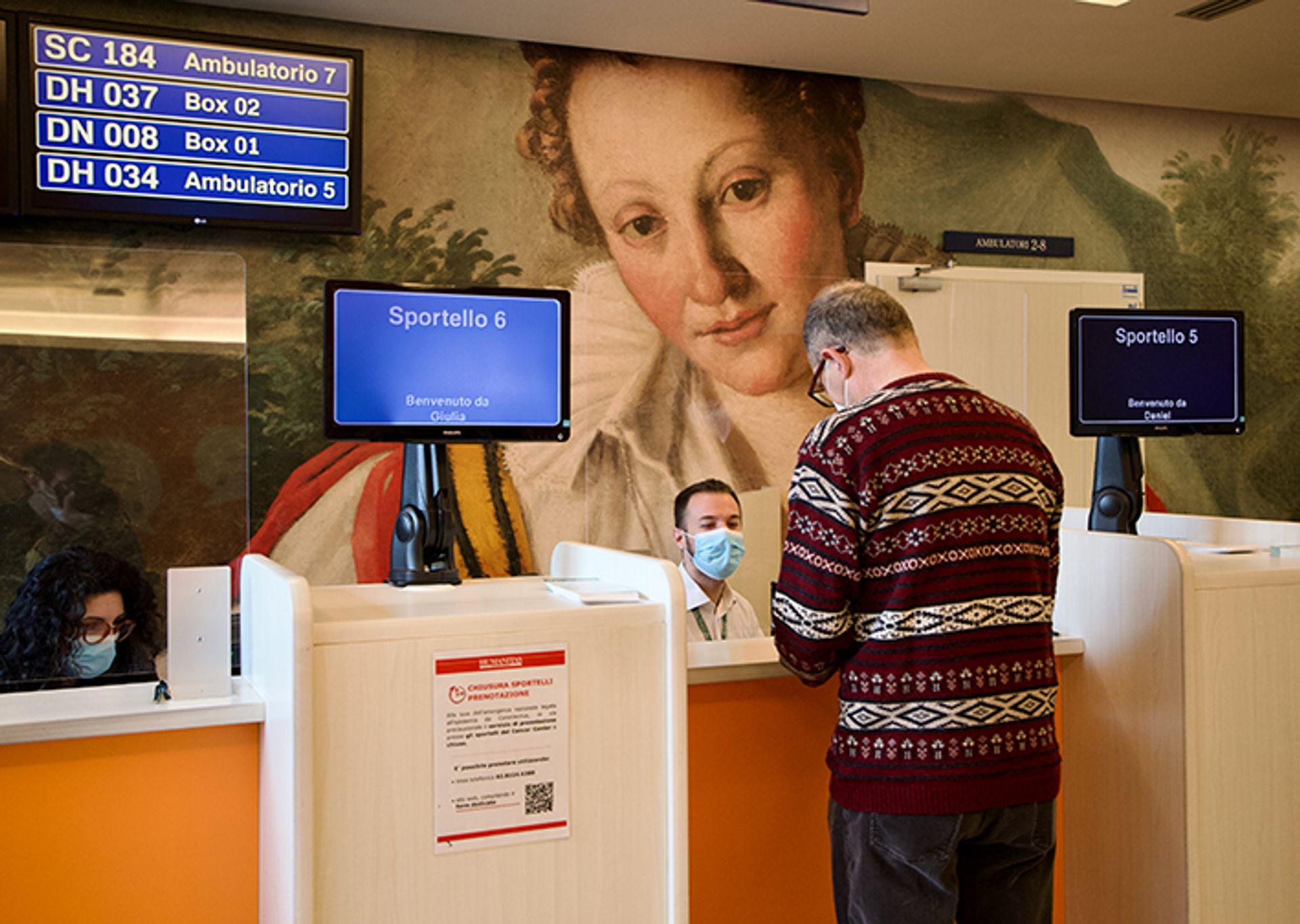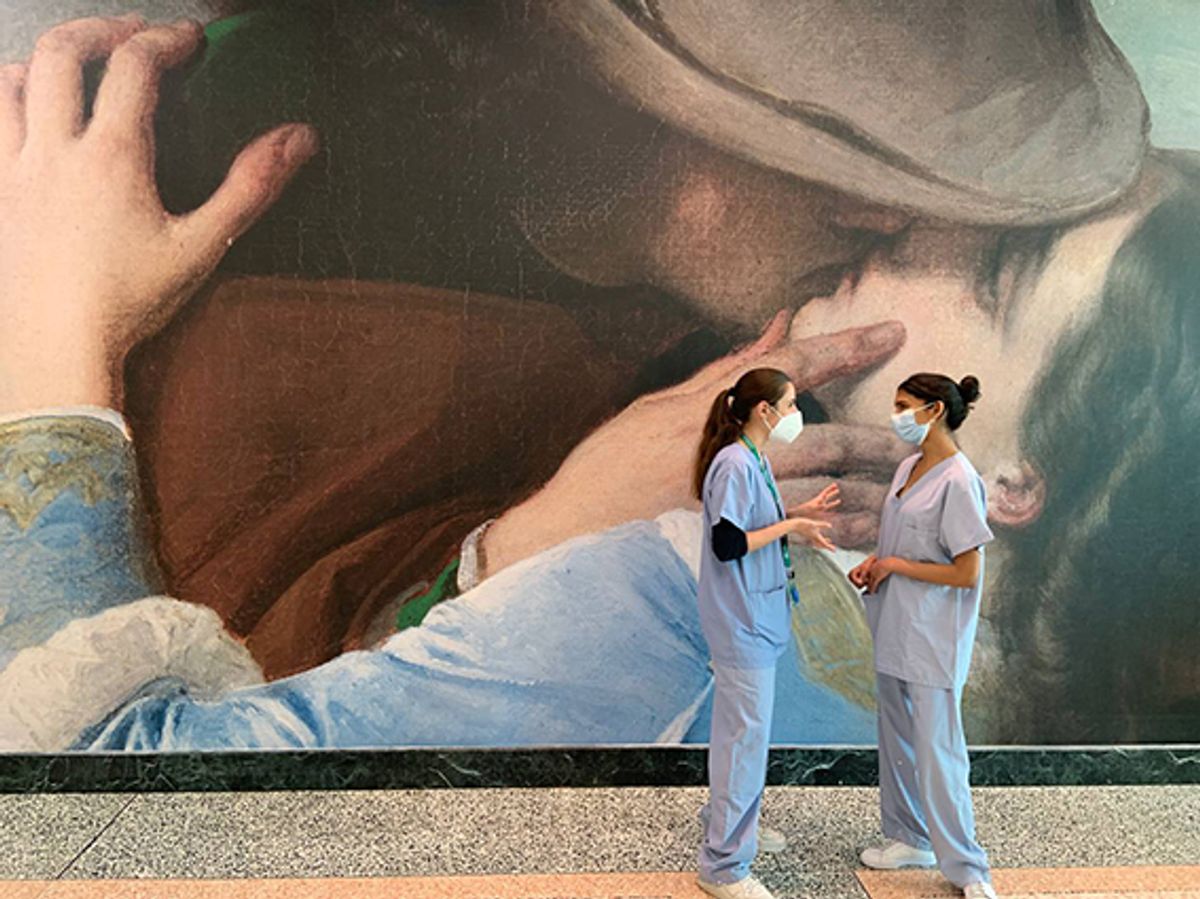Many visit museums searching for solace and enrichment. But the Pinacoteca di Brera in Milan attempts to expand its therapeutic reach by taking some of its iconic masterpieces into a local research hospital
Details from works at Brera by artists from Francesco Hayez to Raphael have been blown up in high-definition and pasted onto walls in the corridors and waiting rooms of the Humanitas hospital in Ronzano, in the metropolitan area of Milan. The project’s organisers claim the partnership will improve the well-being of patients.

A hospital corridor lined with paintings from the Pinacoteca di Brera's collection © Pinacoteca di Brera, Milan
The Pinacoteca di Brera boasts one of the world’s finest collections of Italian painting, with a special emphasis on Venetian and Lombard artists. For the “Brera in Humanitas” project, curators have selected details from 15 of the museum's works and expanded them to a ratio of 1:36. The walls of one corridor display the faces of Hayez’s lovers from The Kiss (1859), while a waiting room in the radiology department has been decorated with the arched gallery encircling the temple of Raphael’s Marriage of the Virgin (1504).
The art has been reproduced on a special material resembling the canvas of the original paintings. Labels are written in both English and Italian, and patients can access information about the works via QR codes that take them to a dedicated website. A number of selected details show natural settings, such as undulating hills reflected in a lake from Francesco Francia's Annunciation (1505) and Filippo De Pisis’s technicolour Flowers at the Window (1938).

A patient at reception © Pinacoteca di Brera, Milan
Unveiling the project at a Milan press conference on Thursday, Gianfelice Rocca, the hospital’s president, said the initiative would “contribute to the well-being of our patients” by making hospitals more beautiful. Brera director James Bradburne told journalists that museums, like hospitals, are places that care for people. “At Brera, from the start, we have imagined a different kind of museum,” he said. “We have taken the museum away from the idea of fun, free time, tourism and earnings, and said that a museum must be like a hospital; a place for the community when people are in need.”
The Brera-Rozzano initiative was born from a similar collaboration in 2018 between another hospital from the Humanitas group in Bergamo and that city's Accademia Carrara museum.
Alessandra Quarta—formerly Bradburne’s deputy at Brera, and now director of Milan’s Museo Poldi Pezzoli—told journalists she had wanted to expand the project to Milan after accompanying a family member to the Bergamo hospital. "I was completely bowled over by these great images from the Carrara Academy," she said. "They give a different feel to the wait, the hospital's hospitality becomes more human."


